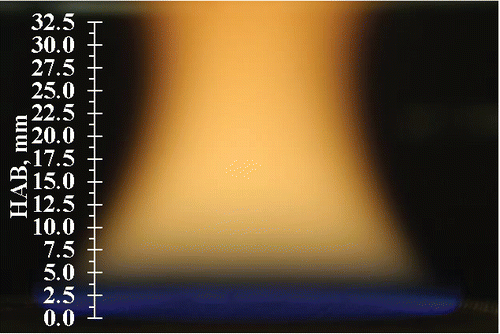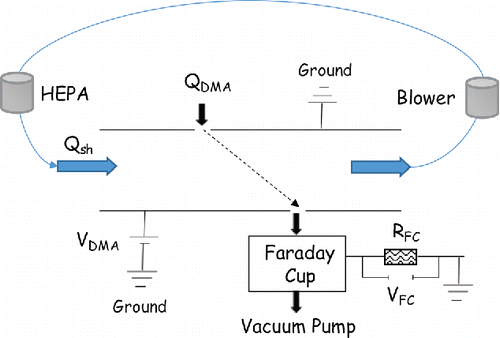Figures & data
Figure 3. Schematic of the dilution sampling and charging system. From top to bottom: (A) traditional aerosol charging using a radioactive bipolar charger; (B) aerosol charging through the use of an ion-enriched dilution nitrogen flow generated upstream of the probe by a radioactive bipolar charger; (C) aerosol naturally getting charged upon flame sampling.
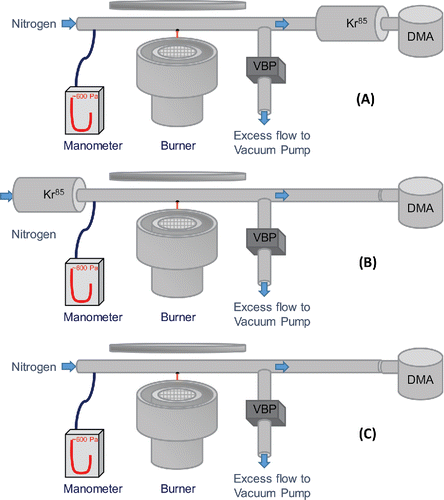
Table 1. Conditions of the sampling and charging system flow configurations.
Figure 4. Parameters used in the data inversion as a function of particle size: (a) total penetration efficiency, Psamp PFC, for different sampling orifice diameters as detailed in the legend; (b) Wiedensohler (Citation1988) approximation, ηWied, of the steady-state diffusion charging probability compared to the equilibrium charge probabilities at the probe and flame temperatures, respectively (see legend); (c, d) transient charging correction factor (symbols) parametrically calculated for the A and B flow configuration as detailed in the online SI, for two values of the particle number concentration—the dashed lines represent the constant values used for data inversion.
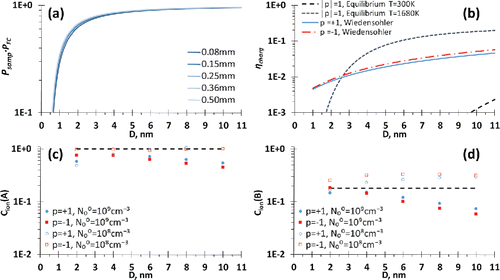
Figure 5. Total particle SDFs inferred by measuring diffusionally charged particles carrying either positive (left column) or negative (right column) charge acquired after crossing the radioactive bipolar charger (configuration A in ). Measurements were performed at different HABs with DR/Δt varying by a factor of 6. Dotted lines represent the “background” SDFs of gaseous ions detected in the presence of only nitrogen flow.

Figure 6. Total particle SDFs inferred by measuring diffusionally charged particles carrying either a positive (left column) or a negative (right column) charge acquired after being diluted with an ion-seeded nitrogen flow (configuration B in ). Measurements were performed at different HABs with DR/Δt varying by a factor of 10. Dotted lines represent the “background” SDFs of gaseous ions detected in the presence of only nitrogen flow.

Figure 7. SDFs of particles that are naturally charged when sampled from the flame and carrying either a positive (left column) or a negative (right column) charge (configuration C in ). Measurements were performed at different HABs with DR/Δt varying by a factor of 10.
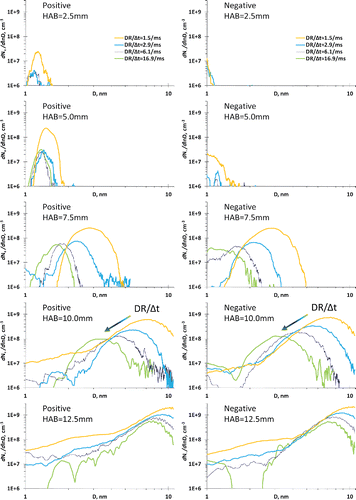
Figure 8. Ratio (Cion in Equation Equation(6)[6] ) of the natural charging probability obtained in the C configuration of over the Wiendsholer (1988) approximation, ηWied, of the steady-state charge probability. Cion is estimated by the ratio of the SDFs in divided by the ones at the same DR/Δt in (for DR/Δt = 1.5 ms−1) and in (for DR/Δts equal to 6.1 ms−1 and 34 ms−1). The ratios of by the equilibrium charge distributions, Cequil, at the flame and probe temperatures and of ηWied itself, CWied = 1, are also shown as asymptotic cases.
![Figure 8. Ratio (Cion in Equation Equation(6)[6] ) of the natural charging probability obtained in the C configuration of Figure 3 over the Wiendsholer (1988) approximation, ηWied, of the steady-state charge probability. Cion is estimated by the ratio of the SDFs in Figure 7 divided by the ones at the same DR/Δt in Figure 5 (for DR/Δt = 1.5 ms−1) and in Figure 6 (for DR/Δts equal to 6.1 ms−1 and 34 ms−1). The ratios of by the equilibrium charge distributions, Cequil, at the flame and probe temperatures and of ηWied itself, CWied = 1, are also shown as asymptotic cases.](/cms/asset/401ffa9e-d211-4df8-a7c2-f50d27240749/uast_a_1179715_f0008_oc.gif)

